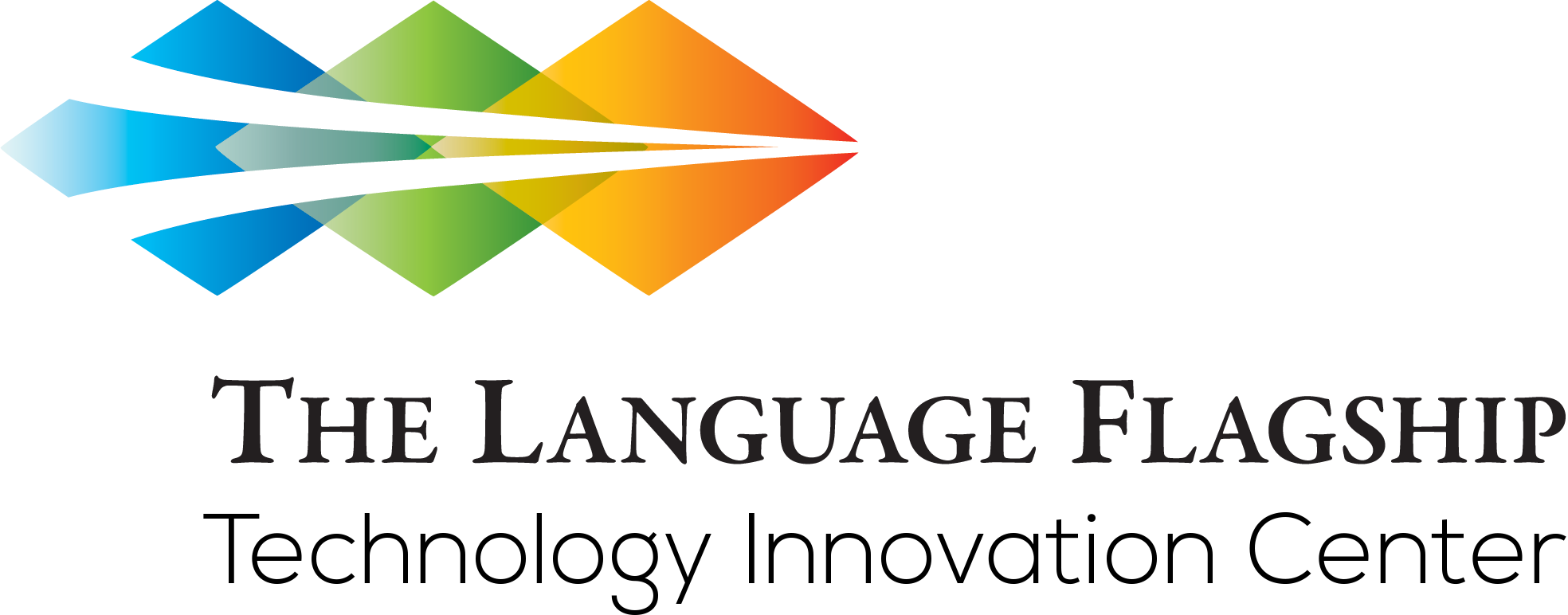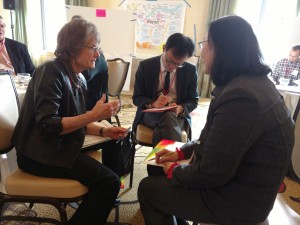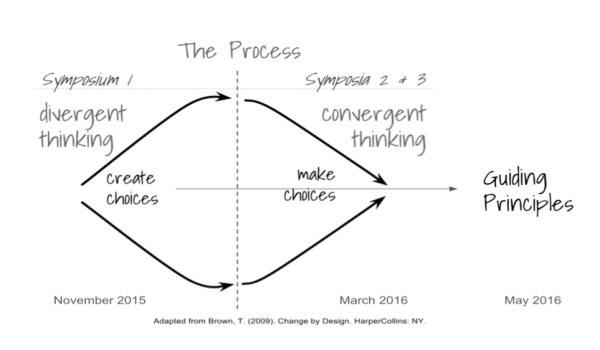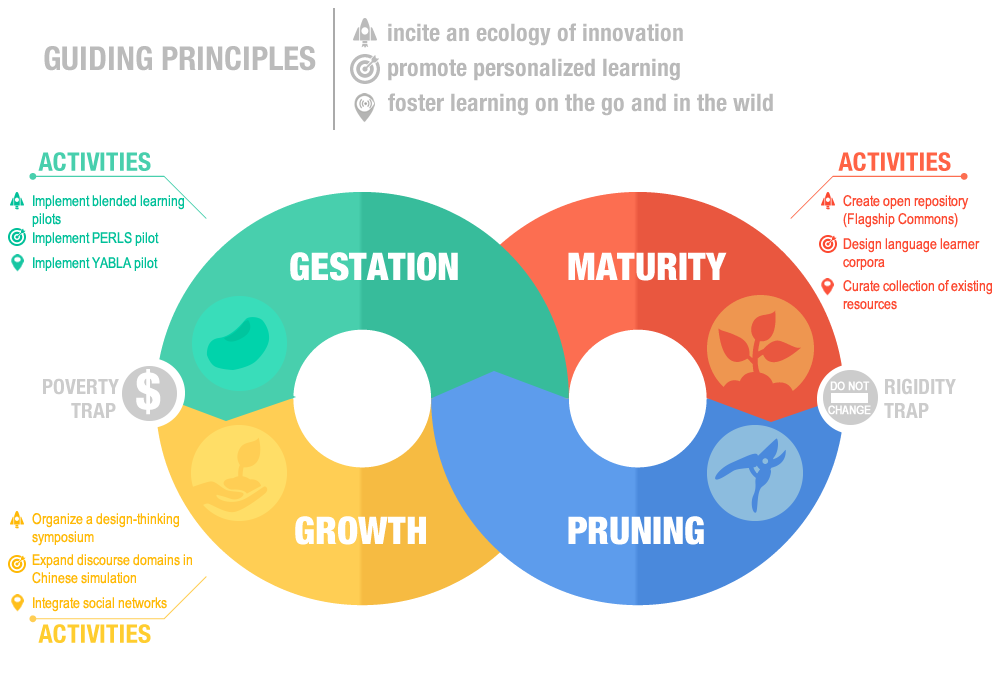
The primary purpose of the Tech Center is to conceive, design, adapt or improve, deliver and test effective means to blend technology into existing Language Flagship Programs. The Tech Center uses design-thinking processes to identify efforts that leverage existing initiatives and resources from the public and private sectors.
This initiative will develop the means to capture best practices and assess which technologies are most effective to support the development of language skills. The initial goal is to identify and develop technology-based practices for effective instruction and learning within a select group of Flagship institutions. The ultimate goal is to create a strategic and comprehensive plan for the integration of technology and effective practices across The Language Flagship. The Center encourages the use of cutting edge, interactive language learning technologies such as simulations, augmented reality games, intelligent tutoring, online role playing, group and individual video-conferencing and targeted conversation practice through virtual platforms.
The Process
In its first year of operation, the Language Flagship Technology Innovation Center (Tech Center) engaged primarily in strategic planning activities and convened expertise from relevant areas in academia (e.g., foreign language education, applied linguistics, computer-assisted language learning, educational technology, etc.) and from entities with stakes in foreign language education in both the public and private sectors. This initial conversation has resulted in the identification of pathways for collaboration and innovation with industry and government partners and in short- and long-term initiatives to improve the way technology is used in support of world language education. What follows is a summary of benchmarks and main activities of the process.
One of the primary goals of the Tech Center is to facilitate the discovery of pathways for innovation with key partners in academia, government, and businesses who share a common interest: advancing world language education through the integration of pedagogically-sound technology solutions. In order to identify those pathways, the Tech Center uses a process informed by design thinking. Tim Brown, one of the leading voices in this area, defines design thinking as
“…a human-centered approach to innovation that draws from the designer’s toolkit to integrate the needs of people, the possibilities of technology, and the requirements for business success” (Brown, 2006) [Read more]
Our process, initiated in late 2015, is intended to facilitate the emergence of innovation by creating a solutions space constrained by three considerations: what is desirable (what technologies or technology-enabled practices are needed in the Flagship to best support and enhance second language acquisition?), what is viable (what can we do with the existing resources in our programs and disciplines?), and what is technically possible (what technologies are available to address needs in world language education?).
In order to ground this process in actual needs, the Tech Center facilitated three main activities in 2015-16:
(1) The administration of a survey to better understand technology use in the Language Flagship program. The survey sought to identify technology use and needs from the perspective of Flagship Program directors, faculty, and students. One of the products that emerged from this survey includes an extensive toolkit of apps or technology solutions in current use in the Flagship Programs. We encourage you to explore this tool and send your suggestions for expansion or improvement.
 (2) The creation of a collaborative report with the New Media Consortium (NMC). The NMC is a leading educational technology organization. A main outcome of the collaboration with the NMC was a signature publication that highlights recommendations that emerged from discussions of major trends, challenges, and technology developments by experts and practitioners in language technologies in higher education. Innovating Language Education identifies main trends and areas of interest and constitutes a rich resource that includes key definitions and proofs of concept. The report raised interest in the Flagship in the larger global language technology community, as evidenced by the over 5,000 downloads that were logged worldwide within the first week of publication.
(2) The creation of a collaborative report with the New Media Consortium (NMC). The NMC is a leading educational technology organization. A main outcome of the collaboration with the NMC was a signature publication that highlights recommendations that emerged from discussions of major trends, challenges, and technology developments by experts and practitioners in language technologies in higher education. Innovating Language Education identifies main trends and areas of interest and constitutes a rich resource that includes key definitions and proofs of concept. The report raised interest in the Flagship in the larger global language technology community, as evidenced by the over 5,000 downloads that were logged worldwide within the first week of publication.
(3) The organization of three two-day symposia designed to grow a community of innovators by convening expertise from academe, businesses, and government. The symposia were led by professionals with expertise in key areas of language technology and constitute the first step in the long-term goal of building an active community.
Building Our Community
A very important aspect of the mission of the Flagship Tech Center is the creation of an active community of innovators. To that end, the Tech Center organized three symposia capitalizing on the recognized expertise of Drs. Trude Heift, Steve Thorne, Scott Payne, and Julie Sykes. These professionals were instrumental in providing insights from research and practice that helped frame and advance the conversation. Each symposium had a distinct purpose that built toward a common goal.
Figure 1: Building a common vision through community-building activities
The first symposium fostered divergent thinking (see Figure 1). Symposium activities were geared toward exploring a wide landscape of possibilities in areas of language technology such as mobile learning, adaptive learning, big data, professional development, etc. The second and third gatherings encouraged convergent thinking. Based on the possibilities identified in the first symposium, these two gatherings resulted in tangible, low-resolution prototypes created by groups of stakeholders, including Flagship directors, students, language technology companies, experts in various field of academia which overlap with language technology (e.g., computer science, instructional technology, etc.). By the end of the third symposium, participants had generated several possibilities in terms of strategy and desirable products and goals, thus helping the Tech Center identify what is desirable in the Flagship Community.
Setting a Strategy
The rich discussions generated by the symposia resulted in Guiding Principles that have helped frame a strategy for Tech Center activities. These Guiding Principles include:
- Inciting an ecology of innovation
- Supporting technology infusion initiatives that promote, create and/or improve personalized learning, and
- Fostering opportunities to use technology for learning on the go and in the wild.
The analysis of the information gathered through the symposia was used by the Tech Center to craft a strategic plan that will guide short- and long-term efforts. Grounded on the guiding principles identified by the Flagship Community, the Tech Center has planned a series of activities for its second year of operation. Following principles of Design Thinking, the activities identified based on the extent to which they are desirable, technologically feasible, and have the potential to become economically viable along a three-stage cycle. The three-stage cycle ensures that activities at different levels of maturity are considered, which results in a diverse portfolio. The three stages are (a) gestation (activities that can be started, improved or supported); (b) growth (activities that are new and that show potential to scale to the whole Flagship Community); and (c) maturity (activities that are currently taking place that should be maintained). To ensure that the grassroots ideas that emerged from the Flagship Community were integrated into the plan, the Tech Center was careful to select activities that would be aligned with the Guiding Principles that had been identified. Figure 2 lists the three guiding principles and shows how they are related to each of the activities. The activities identified present opportunities for collaboration with private sector partners and across institutions.
Lean more about activities and avenues for getting involved
Figure 2: Ecocycle Planning – Adapted from Liberating Structures
Contact Information
TECH CENTER
1890 East West Road
Moore Hall 256
Honolulu, HI 96822
(808) 956-5121
tech.center@hawaii.edu
Follow Us





